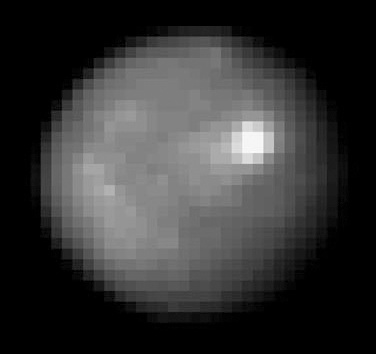I couldn't not share these quick videos with you. First: SpaceX made their first attempt to land a re-usable rocket booster on an unmanned floating landing pad in the middle of the pacific ocean:
Above: This what happens when you let R2D2 drive...
What exactly is happening here?
OK, obviously, the rocket smacks into the landing pad and explodes.
OK, obviously, the rocket smacks into the landing pad and explodes.
The latest SpaceX cargo launch to the International Space Station had an experimental first stage that could fly back from the edge of space, find its landing pad in the ocean, and land on it. If this technology can be made to work then it would help to lower the cost of access to space for the future - and this is actually not-too-bad for a very first test of an experimental technology: The rocket found its way back to the pad from the edge of space, approached it at a sensible speed, and then crashed. The fact that the first worked thirds of the mission worked first time is promising, and the reason it all went wrong - the guiding fins on the rocket base ran out of hydraulic fluid too soon - is fixable.
SpaceX has been in the news a lot this week: They're starting a satellite building operation in Seattle, with which they plan to expand the internet.
Second: The Dawn mission has come close enough to the dwarf planet Ceres to start taking pictures of it - here's the video of the planetary embryo:
Ceres is a relic, a planet that had its growth stopped at a very early stage, which makes it a fascinating target. But what's really caught everyone's attention is the bright white dot - it's caused a fair bit of speculation, and it's showed up on Hubble images to:
 |
| Above: If you take the pixels away and that's the death star then a tiny part of my brain will go 'Coooooool!'. The rest will start gibbering. |
Computer simulations of Ceres early history suggest it has a massive amount of water ice in its interior, and perhaps a deeply buried ocean near its core - so my guess is that the bright spot is a crater that has punched through the dusty surface and into the bright layer of ice beneath. But there are other possibilities: The Herschel space telescope discovered water vapour over Ceres not too long ago - so this could even be geyser of some kind. We'll find out more as the Dawn spacecraft gets closer to this billions-of-years-ancient world....
Elsewhere on the internet:
Nanobots become real
ESA builds up to spaceplane test
ESA builds closer ties with China
No comments:
Post a Comment